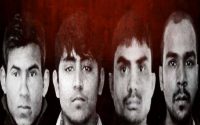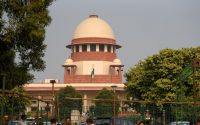$100 Website Offer
Get your personal website + domain for just $100.
Limited Time Offer!
Claim Your Website NowAn overhaul long overdue
Source:- thehindubusinessline.com
To rejuvenate the bureaucracy, reforms in selection, cadre allocation and training are imperative
Modi government 2.0 is installed in office and is back at work. But to ensure that work happens efficiently, isn’t it time policymakers implemented further reforms in the Civil Services?
There have been discussions around the procedures adopted by governments for appointing top bureaucrats. But now, questions are being raised on cadre allocation, which is the first step taken by the All India Service officers as they begin their journey.
A recent news report that caught one’s eye was the Delhi High Court order quashing the cadre allocations of the Indian Administrative Service and Indian Police Service officers of the 2018 batch, made by the Centre. The Court ordered fresh cadre allocation.
The Centre promptly challenged the High Court verdict. The Supreme Court, where the case reached, modified the Delhi HC order and granted the aggrieved candidates the liberty to choose their cadres by listing their preferences even as it ruled that the original allocation was not to be disturbed.
While the Union Public Service Commission is responsible for conducting the exams and selecting the candidates, cadre allocation is done by the Department of Personnel and Training (DoPT).
In 2017, the DoPT had amended the earlier roster-based system of cadre allocation policy to make it a zone-based one. This was because an increasing number of officers were opting for cadres in their home or neighbouring States.
According to Prabir Jha, a former Civil Servant and HR leader now — Prabir Jha People Advisory — “Cadre allotment is a one-time decision, unless on account of marriage or State matters such as bifurcation of States.”
The allotment of a cadre is typically done by the respective cadre controlling ministry of the three All India Services (IAS – DOPT, IPS – MHA, IFoS – Ministry of Forests and Environment).
The Central services are controlled by their respective Boards or Ministry. So DoPT is not the cadre controller for all.
The system of cadre allotment has been evolving over the years. Jha says, “My view is, the 50:50 split between home state allotment and outside following preferences on the basis of the merit list was apt.”
The only other option, he says, would be to do away with the concept of asking for preferences for state cadres and do a completely randomised allotment to any State through a robust algorithm. “If someone then opts for an All India service the officer knows he is liable to be allotted any State, big or small, in any region and will not be surprised by a decision after exercising a choice,” he says.
The government of the day is well within its rights to reform or restructure the services, especially focusing on bubbling up diverse talent, points out Aashish Chandorkar, a public policy commentator.
Chandorkar feels the government did a dual control for the cadre allocation to ensure more variety for the selected candidates. For example, if too many higher ranked candidates selected one or two of the five zones and then services as per ranks — precisely what happened — it opened up higher placed services option for relatively lower ranked candidates in other zones.
Services or zones
The government effectively wanted the candidates to opt for either high placed services or favourable zones, but not both. This would have been a structural change.
Cadre allocation is just one aspect. There is also a need to take a fresh look at the recruitment, training, and performance evaluation of the Civil Service as there is a growing feeling in the Service that the whole system has become Prime Minister’s Office centric now.
Jawhar Sircar, former Culture Secretary, feels that “reduction of maximum age (for taking the exam) may be a good idea as people who come in after 30s have already fixed world views and can hardly be trained or taught to accept new ideas.
In fact, a proposal to reduce the age limit was suggested in the NITI Aayog report Strategy for New India @75. On Civil Services reforms, it says, “The hiring age limit for the Civil Services should be brought down to 27 years from the general category in a phased manner by 2022-23…” This of course did not go down well.
Focus on outcomes
Chandorkar feels the bureaucracy needs to be more outcome-focussed. What exactly was achieved in terms of improving the quality of life for the citizenry? This should be the central question around which HR processes and performance management systems can be restructured. According to him, five key points are:
1. Younger people in the system (a la NITI proposal)
2. Outcome focus
3. Specialised individuals for areas like urban management, energy management, public transportation — fixed tenure private individuals helping Secretaries is a good start
4. Greater role for non IAS/IPS services where it’s possible
5. Rank advantage cannot continue for life
The UPSC and the State counterparts need to be rejuvenated. Some appointments are purely and obviously political and have disastrous consequences on the quality of public service for decades, therefore, the rising demand for greater transparency in the system.



